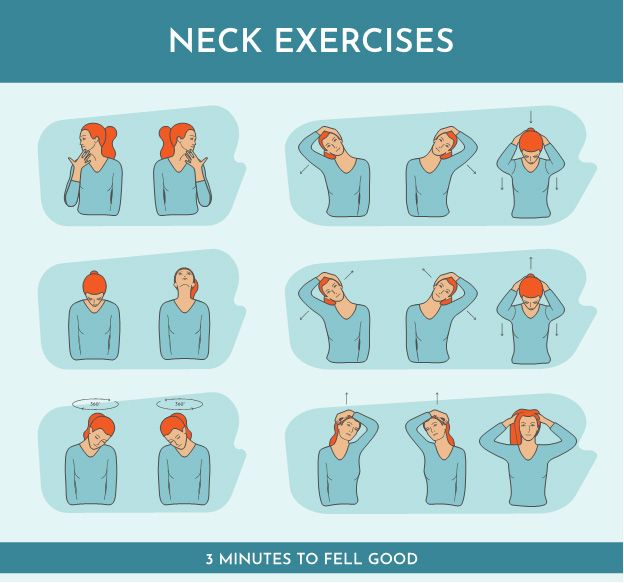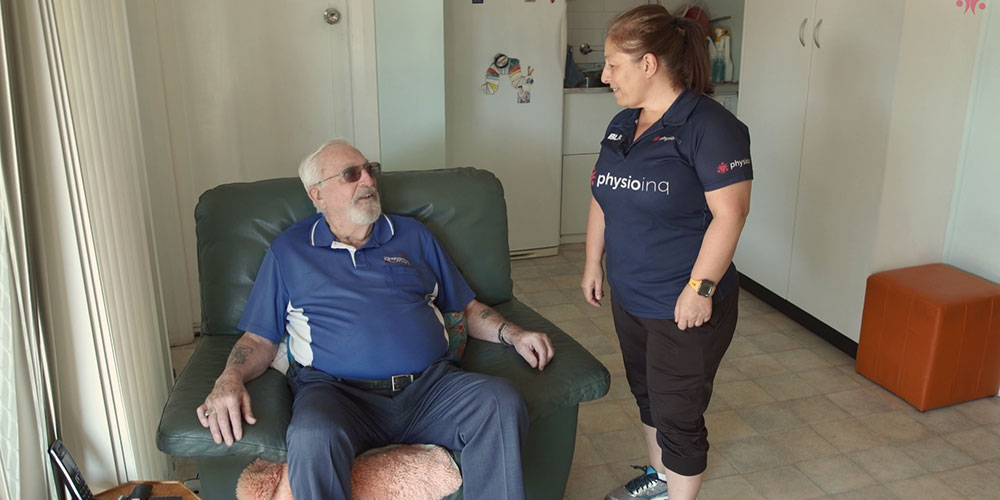As we continue through the 21st century, our lives are lived more and more on our devices like mobile phones, tablets, laptops and the list goes on.
Whether we’re working from a laptop all day or we’re a teen who’s obsessed with Instagram, spending too much time on a computer can lead to tension neck syndrome which often causes us to adopt poor posture and develop painful symptoms.
If you’re suffering from pain in your neck and shoulders, you could be experiencing tension neck syndrome and it could be coming from all the time you spend on your computer. Let’s discuss what tension neck syndrome is and how physiotherapy help.
Tension Neck Syndrome Definition
Tension neck syndrome can include a variety of disorders and syndromes involving the neck and shoulder areas known as the cervicobrachial area. Some of these disorders include:
- Trapezius myalgia
- Muscular rheumatism
- Posture-related neck pain
- Tension fibromyalgia
- Fibrositis
- Myofascial syndrome
- Cervical strain
Here, we’re specifically going over posture-related tension neck syndrome in terms of being on your computer for extended periods. This can also be called “text neck” which is characterised by overuse or repetitive muscle stress caused by holding your head in a forward, downward position.
This posture creates massive amounts of tension in the deep muscles of the neck and shoulders causing pain of varying degrees as well as chronic headaches.
Tension Neck Syndrome Symptoms
If you are experiencing tension neck syndrome due to computer use, you might have noticed one or more of the following signs and symptoms:
- Upper back or neck pain when using a device, either right away or a few hours later
- Dull or sharp pain in the neck and shoulders at the end of the day
- Postural fatigue
- General shoulder pain and tightness
- A head-forward posture
- Chronic headaches made worse when looking down or at a screen
All of these symptoms are common and in most cases, tension neck syndrome won’t be life-threatening. However, it can severely affect your day-to-day life and can lead to a plethora of other problems like poor exercise habits and overuse of painkillers.
Causes of Tension Neck Syndrome
When your head is aligned properly in between your shoulders, the weight of your head will exert roughly 4.5 to 5.5 kg of force through the muscles of the neck and shoulders. However, moving your head just two or three centimeters forward, it exerts almost six times as much force on those same muscles.
This postural misalignment is exactly what’s happening when we spend too much time on our devices without proper breaks, stretching, and strengthening exercises to counteract the poor posture.
Treatment is necessary when dealing with tension neck syndrome as a result of too much screen usage. Untreated, it can lead to inflammation of ligaments in the neck, nerve irritation, and a change in the curvature of your spine.
You can also develop what’s known as a “dowagers” hump which is an upper thoracic postural deformity.
Solutions to Tension Neck Syndrome
The best solution to tension neck syndrome is proper physiotherapy implementation. Treatment helps to not only reduce pain associated with tension in the neck and shoulders but also to improve postural problems that contribute to the problem.
Most physiotherapy programs to treat tension neck syndrome involve four phases.
The first phase aims to reduce pain and inflammation. This might be with anti-inflammatory medication or by using a strategic icing method.
The next phase is when your physiotherapist will work to realign your joints and improve your range of motion. You’ll learn exercises for muscle length, strength, and flexibility by creating a personalised plan made specifically for you and your needs.
In this phase, your physio might also recommend remedial massage and stretching techniques to address especially tight or shortened muscles of the neck and shoulders.
In the third phase, your physiotherapist will help you restore full function in your neck and shoulders with a purposeful therapy program that you’ll work on together in the clinic. From there, phase four is all about prevention – working on postural awareness, taping techniques, and other preventative measures.
If you’re reading this on your laptop, tablet, or phone and noticing some pain and discomfort in your neck and shoulders, it’s time to make an appointment with a physiotherapist.
Struck for time but want some immediate relief? Try out these common neck exercises to combat your tension neck syndrome.

At Physio Inq, we offer clinical appointments at various convenient Australia locations or we can come to your home or office with our mobile services. You don’t have to live with tension neck syndrome. Contact us today to make your first appointment so you can get back to pain-free living.
If you prefer heading into one of our Physio Inq clinics, check out some of our current clinics across Australia.
Date Published: Wednesday, November 27, 2019
Locate a Mobile Physiotherapy
Service Near me
Get the experience & convinence you deserve to support your or a loved one's allied health needs.
Our Mobile Physiotherapy team are currently serving & taking appointments in the following states and regions in Australia:
New South Wales
- Blacktown
- Blue Mountains
- Campbelltown And Macarthur
- Canterbury-Bankstown
- Eastern Suburbs Sydney
- Georges River
- Hawkesbury
- Inner East Sydney
- Inner West Sydney
- Lake Macquarie
- Lower North Shore
- Newcastle
- Northern Beaches
- North Sydney
- Parramatta
- Penrith
- Southern Highlands
- South West Sydney
- Sutherland Shire
- Sydney CBD
- The Hills Shire
- Upper North Shore
- Waverley
- Wollongong
Tasmania
Victoria
Need to get into direct contact with ur Client Services team? We're all ears. Call our team directly on 1300 731 733








